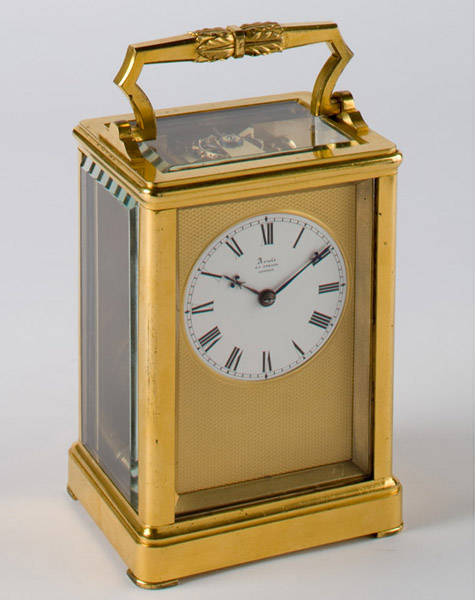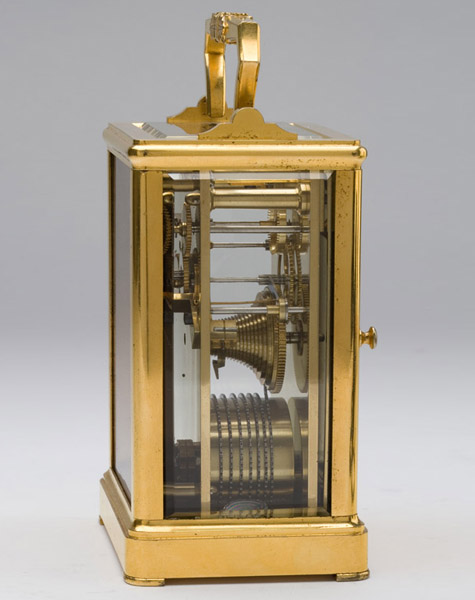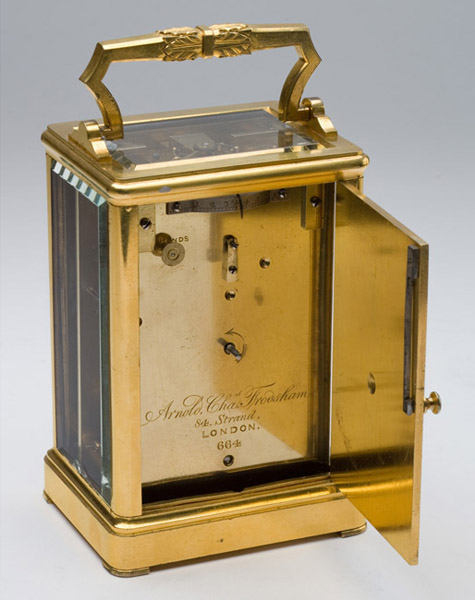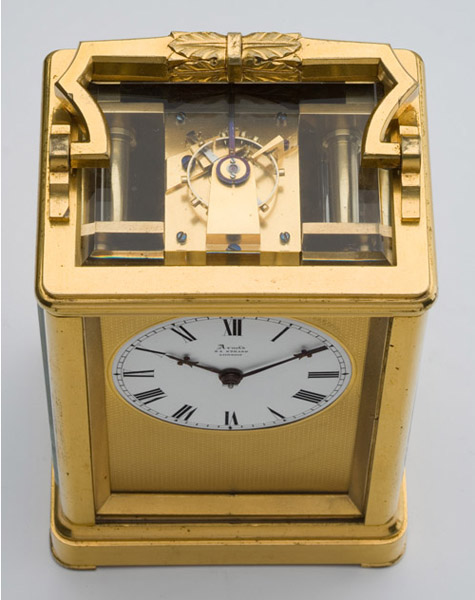[javascript protected email address]

Arnold, Charles Frodsham, London No. 664




Circa 1845
Sold
6¼ inches high
A fine Victorian gilt-brass carriage timepiece. CASE The well proportioned gilt-brass case has a faceted handle with well defined foliate tied central section. Large escapement viewing aperture with bevelled glass. Similarly glazed sides, solid gilt-brass rear door and moulded base resting on simple pad feet. DIAL The dial has a perfect engine-turned mask and circular white enamel chapter disc signed Arnold 84 STRAND London. Black Roman chapters with outer minute track and blued steel fleur de lys hands. MOVEMENT The high quality movement comprises two thick gilt-brass plates held together by four front-pinned pillars. The going train has a spring barrel and fusee with Harrison’s maintaining power and chain lines. Three wheel train ending with a very high quality gilt-brass escapement platform with cut bimetallic compensated balance to the lever escapement. Provenance: The collection of the late Hans Staeger, Germany THIS CLOCK IS ILLUSTRATED IN: Hans Staeger, 100 years of Precision timekeepers from John Arnold to Arnold & Frodsham, Stuttgart, 1997, pp. 693-696, illustrated in six colour plates. The present clock is a particularly interesting and early English carriage timepiece. The condition is wonderful in that the brass case is unblemished and it retains the original lovely golden colour. The perfect white enamel dial is free from any chips or hairline cracks. The original platform escapement and the movement plates are also gilded and of the very highest quality with maintaining power and cut bimetallic balance. The partnership between John Roger Arnold and Charles Frodsham was purely on paper. In reality when J. R. Arnold died in 1843 Charles Frodsham, already a clockmaking force in his own right, approached Arnold’s executors and in 1844 he bought the whole of the Arnold business. The postal address became known as “Arnold & Frodsham, Chronometer Makers, 84 Strand, London". This title was retained until 1858 whereupon it reverted to Charles Frodsham, Strand. This particular clock is an extremely interesting timepiece because it may well be a unique clock in its own right. As above, Frodsham began the joint signatures from 1844 and it is thought that the subsequent number sequence for all his clocks and regulators post 1844 began with 600. The present clock, No. 664, could have been old Arnold stock but more likely to have been new Frodsham stock. It’s doubtful if any brass carriage clocks survive signed Arnold, 84 Strand (possibly none were made) and very few joint Arnold & Frodsham carriage clocks between the 600-700 series survive to this day – none of them in the combination of timepiece in brass case with enamel dial. Whilst it is unlikely that Charles Frodsham only made one example like this, it is very possible that being a new company, just feeling its way, that he made only a very few, and that No. 664 is the only one to survive.
